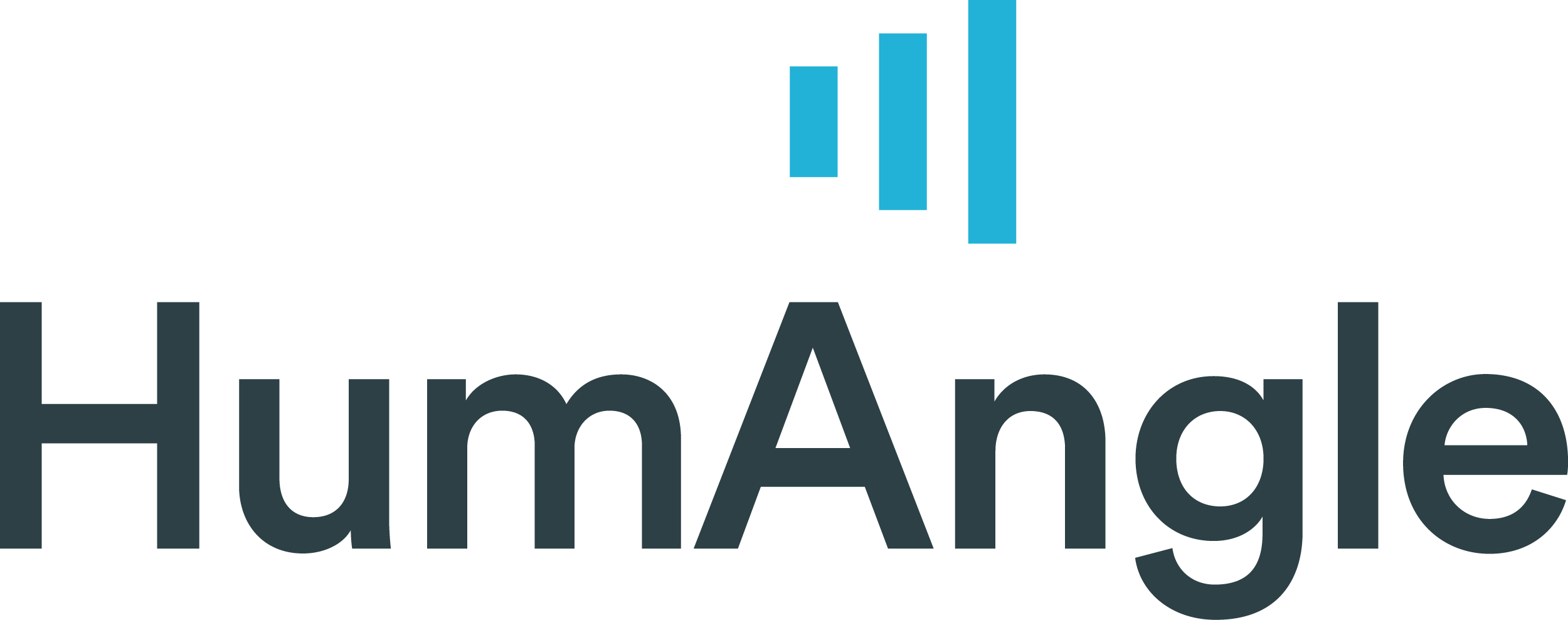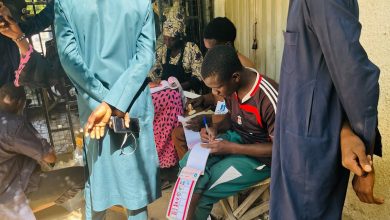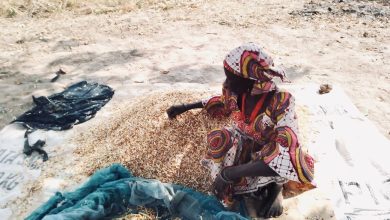Mega School with Mega Struggles: Inside Yobe’s Struggle for Quality Education
While the Yobe State Government claims to have invested billions of naira in constructing ‘Mega Schools’, findings reveal that the quality of education in these institutions remains inadequate.
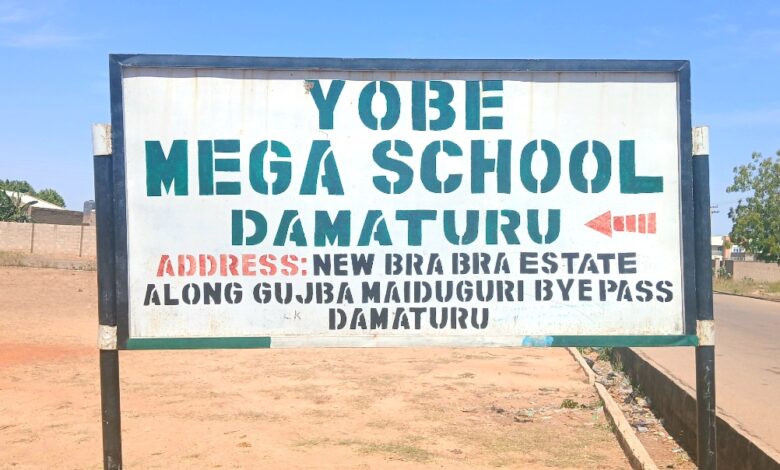
As one drives along the Gujba-Maiduguri Byepass Road in Damaturu, capital of Yobe State in northeastern Nigeria, the New Bra Bra Estate comes into view. Among the residential houses, one structure stands out: Yobe Mega School Damaturu. The school’s striking appearance features walls painted in a warm milk and brown colour scheme, complemented by reddish-brown zinc roofing and crisp white aluminium window frames.
Commissioned by Governor Mai Mala Buni in 2023, the citadel is one of seven mega schools constructed in various local government areas to enhance educational infrastructure and provide quality education in the state.
This development comes a decade after Boko Haram’s insurgency ravaged Yobe State’s education sector, leaving schools in ruins and contributing to the more than two million out-of-school children across the northeast, according to UNICEF.
The toll on Yobe has been severe, with 167 students and three teachers killed, and 86 students injured, Deputy Governor Idi Barde Gubana revealed. This tragic aftermath underscores the severe consequences of the insurgency on the state’s education system.
Revitalisation process
In a bid to revitalise the education sector in the state, authorities, in November 2021, formed a six-member board to oversee the Yobe Education Trust Fund (YETFUND). Two months later, the government organised an education appeal fundraising event in Abuja, Nigeria’s capital city, to mobilise funds to improve teachers’ capacity, infrastructure, and ensure access to and completion of basic education.
The event drew overwhelming support from donors. Borno State contributed ₦115 million towards rebuilding efforts, while Aliko Dangote donated ₦350 million, and AbdulSamad Rabiu gave ₦300 million. As the chief launcher, Dahiru Mangal made the largest contribution, donating ₦1 billion. Other dignitaries and guests also extended their support to Yobe’s education recovery. Following the fundraiser, YETFUND announced a total sum of ₦1.6 billion.
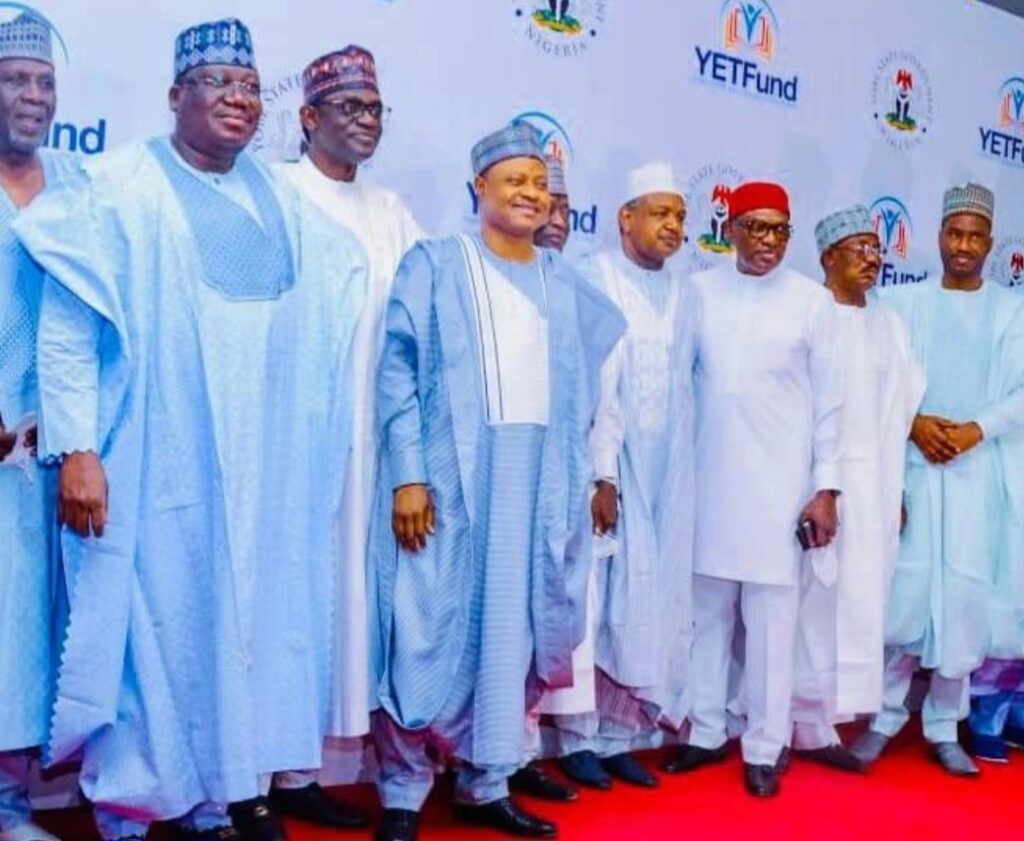
In November 2023, the YETFUND’s board chairman, Abubakar Kachalla Ali, announced that 27 schools across the state have benefited from the fund’s interventions in collaboration with the State Universal Basic Education Board (SUBEB). The beneficiaries include seven ‘Mega Schools’, seven ‘Model Schools’, and seven Government Girls Senior Secondary Schools.
However, the cost of constructing each Mega School remains unclear. Repeated attempts to obtain this information from YETFUND and SUBEB officials were unsuccessful, as they did not respond to multiple inquiries.
Early days at the ‘mega school’
The Damaturu Mega School began operations in January 2023 with 12 classrooms, initially accommodating only Junior Secondary School 1 and 2 students. According to the school’s admission officer, Abdulrahman Isa, the initial enrolment was 602 students—312 male and 290 female.
Isa, also highlighted the school’s facilities, including a library and an ICT centre equipped with 20 computers, which provided students with access to essential learning resources. The teaching staff comprised six permanent teachers, supported by 17 corps members.
“When the school was established, we picked some students from other schools until September 2023 when we started admitting through entrance examinations where prospective students were required to purchase forms for ₦200,” Isa explained. “Successful candidates would then be admitted to the school. Admitted students pay ₦1,800 for registration fee, come with a hoe, two brooms, and a half ream of A4 paper used for printing examination questions. They also pay ₦500 for the Parent Teachers Association (PTA).”
Mega school with mega challenges
In December 2024, we met 15-year-old Khadija Babaji, one of its pioneer students, during a visit to the school. She shared that she walks over an hour to school every weekday. However, she expressed disappointment in the quality of education at the mega school, particularly in her favourite subject, Basic Science, which she felt was not being taught to her expectations.
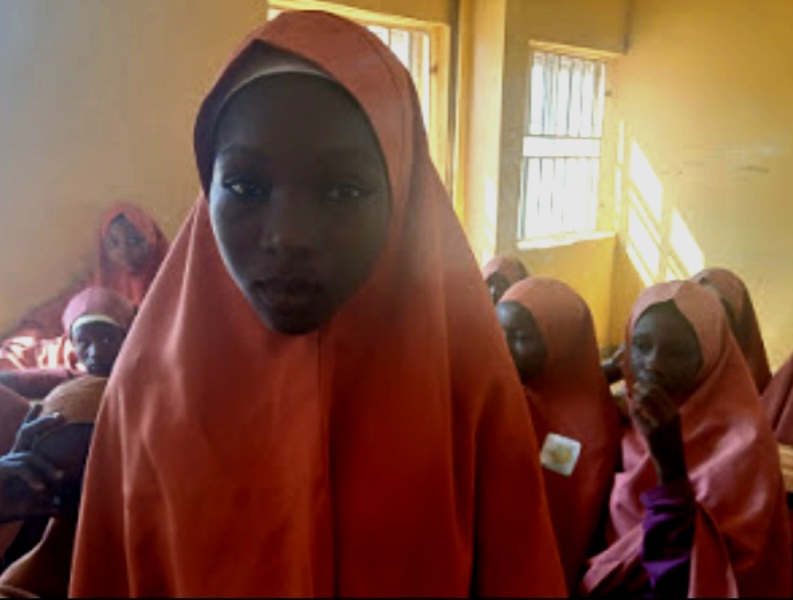
Currently, Khadija is in JSS 3D and remains committed to her aspiration of becoming a medical doctor, but she is uncertain whether the school will be able to prepare her for the dream.
“I think private schools are better because they ensure you learn everything necessary, but here [at the ‘Mega School’], it depends on the learner. You will not be pushed to learn some things,” she said.
According to a recent Global Education Monitoring report by the United Nations Educational, Scientific and Cultural Organization (UNESCO), the class size required for satisfactory learning outcomes is typically around 20 to 30 students per teacher. This standard is based on research indicating that smaller class sizes can lead to more individualised attention, better student engagement, and improved academic performance.
However, this is not the case at the Mega School, which has a population of 829 students.
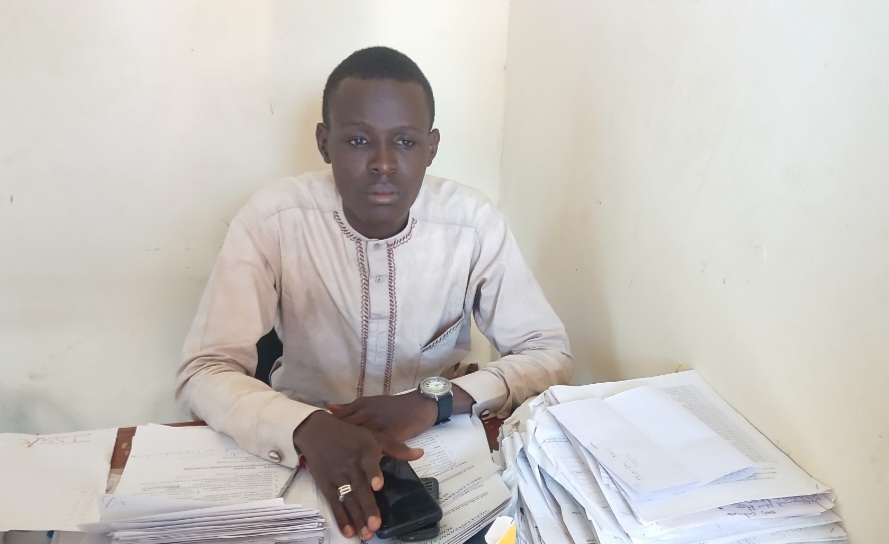
“We have 245 students in JSS 1, 327 in JSS 2, and 257 in JSS 3. Each class has A to D. JSS 2 has more students because we demoted so many students who are supposed to transition to JSS 3,” Isa told Social Voices. He added that class sizes typically range between 40 and 50 students. Our findings show that JSS 3D—Khadija’s class—has 75 students.
Similarly, Amina Bawa, a teacher overseeing JSS 2B, noted that she has 85 students in her class. The Basic Science teacher said the lack of modern and sufficient teaching materials severely impacts her ability to provide quality education to her students.
Dr John Hattie, an education researcher and author, said exceeding the standard class size of 30 students can have detrimental effects on teaching and learning. In his book Visible Learning, Hattie notes that larger class sizes hinder teachers’ ability to provide personalised feedback and support, leading to disengagement and lower academic achievement. Overcrowded classrooms also create a chaotic environment, making it challenging for teachers to manage behaviour and maintain a conducive atmosphere.
At Mega School Damaturu, class sizes of 75-85 students exacerbate these issues. Despite some classrooms being equipped with electric fans and air conditioning units–some of which are non-functional–these amenities do little to alleviate the strain on inadequate classrooms. When confronted with these concerns, the school’s admission officer acknowledged the issue, citing expectations of additional classrooms to address overcrowding. However, there is no clear indication of when or if this will happen.
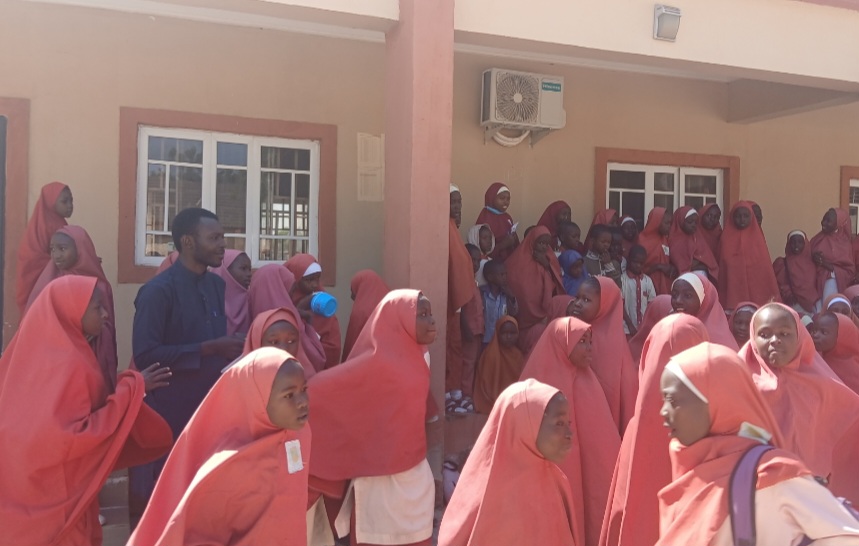
Supply shortages
The school is also plagued with other issues, including broken whiteboards, a shortage of temporary markers, hindering teaching and learning, and outdated textbooks in the library that do not align with the current curriculum, among other things. Also, a lack of functional seats and desks in classrooms frustrates academic activities, with many needing repairs.
To address these challenges, the school management often relies on funds from the Parent-Teacher Association (PTA) to purchase necessary textbooks from commercial booksellers. The principal was unavailable during our visit, as he tended to his farm harvest in a nearby village. However, his secretary, Husseini Sani, showed us the school’s population database, which shows that currently, 21 full-time staff and 32 corps members attend to nearly 1,000 students.
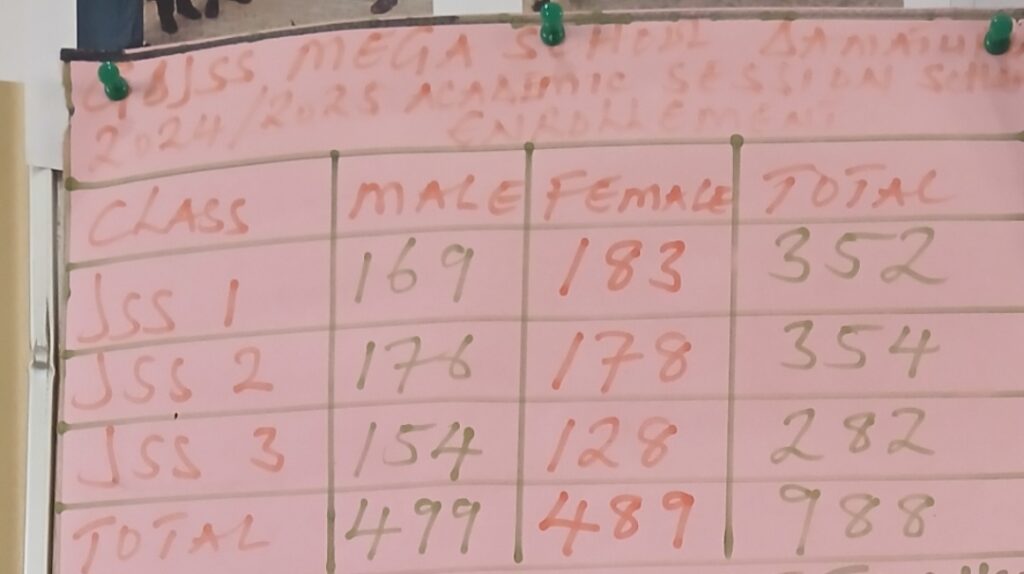
While YETFUND claimed that some proceeds from the invested treasury bills were used to provide “boreholes, furniture and toilets facilities for 21 different schools”, the Damaturu Mega School continues to struggle with a lack of adequate water supply. The school’s solar-powered water system is non-functional, and without consistent electricity, there are no alternative solutions. This water shortage has led to inadequate sanitation facilities, with the school’s restrooms in poor condition.
Aziza Muhammed, a JSS 3B student, explained how the lack of proper sanitation facilities, worsened by the water crisis, forces her to miss school during menstruation due to the absence of hygiene kits and clean restrooms. She also raised concerns about the school’s clinic, which, despite being present, remains non-functional, leaving students without access to essential health services.
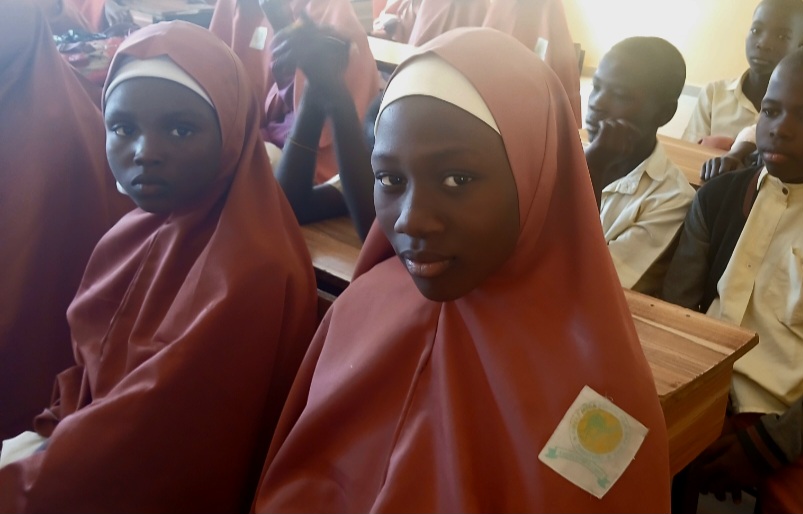
“She had complained to me that there’s not enough water and some hygiene equipment to aid their condition in the school. That’s why I told her mother not to allow her to go to school during such a situation [menstruation],” Nafiu Muhammed, Aziza’s father, told Social Voices.
More struggles, even for younger pupils
In the primary section of the Damaturu Mega School, inadequate staffing has led to an unsustainable workload for teachers. A single teacher is responsible for teaching nine subjects to classes of 50 to 60 pupils. According to Habiba Maikore, the headmistress, the school has only six permanent teachers, supported by seven volunteer teachers and four corps members.
Maikore shared that she provides a monthly stipend to the volunteer teachers from the school’s account, recognising their invaluable contributions despite the challenges.
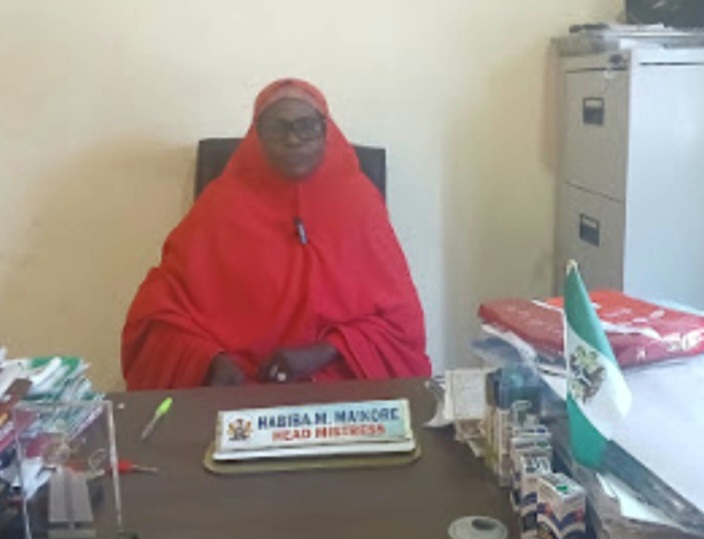
Although the primary section collects a registration fee of ₦1,500 and a PTA fee of ₦500 per term from new students, it still faces numerous challenges, such as inadequate chairs and desks for pupils and a shortage of learning equipment, primarily for nursery classes.
In 2023, the Yobe State Teaching Service Board expended ₦19 million on teaching and learning equipment. Also, the 2024 state revised budget allocated ₦750 million for capital expenditure projects under the State Universal Basic Education Board (SUBEB).
This allocation includes ₦500 million for constructing new junior and primary schools, ₦200 million for renovating existing junior and primary schools, and ₦50 million for procuring teaching and learning equipment for junior and primary schools. Similarly, the total approved capital expenditure for the Ministry of Basic and Secondary Education for 2024 amounts to ₦9.8 billion.
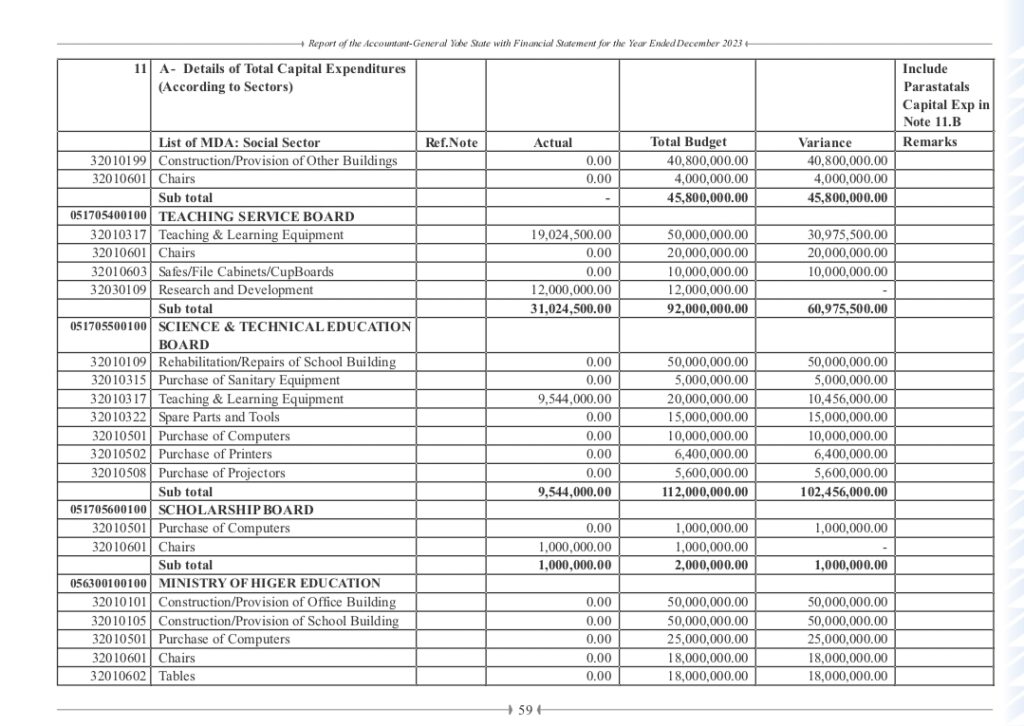
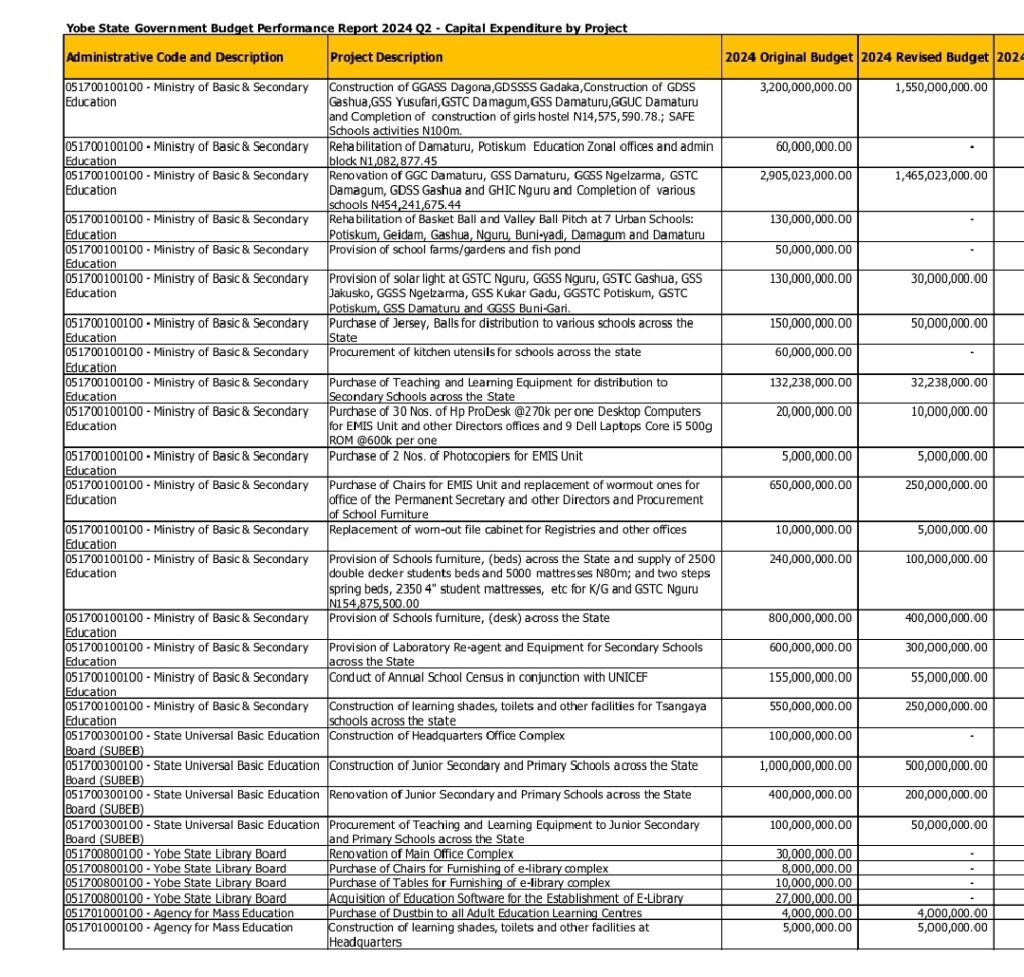
Yet schools in the state are in a terrible situation with the inability to deliver classes effectively for students and pupils.
During the visit to the school, we shared the budget allocation figures with the admission officer and headmistress. Both expressed unawareness of these allocations. They then provided a School Development Plan (SDP) for the 2023/2024 academic session, detailing the prioritised challenges that needed to be addressed in the school. However, these priorities had yet to be implemented, even after sharing a copy of the SDP with the Damaturu Local Education Authority.
In December 2024, we visited the SUBEB office in Damaturu twice to present our findings and inquire about efforts to address the challenges at the Mega School. However, our attempts to speak with the executive secretary of the board, Isa Shettima, were unsuccessful, as he was reportedly on an official trip. We also submitted letters to the board, requesting approval to visit other Mega Schools in the state, but did not receive a response from SUBEB.
Meanwhile, Shettima could not be reached via several calls and follow-up text messages sent to his known mobile number. He also did not respond to WhatsApp messages seeking his reactions and comments to our findings on the poor state of Yobe Mega School Damaturu.
This report is a collaboration between Social Voices and HumAngle under the 2024 HumAngle North East Accountability Project and was first published by HumAngle.
Yobe State in northeastern Nigeria has launched seven mega schools, including the standout Yobe Mega School Damaturu, as part of efforts to recover from Boko Haram's devastating impact on education. Despite fundraising efforts bringing in ₦1.6 billion, issues persist such as overcrowded classes, lack of teaching resources, poor sanitation, and a non-functional water system. Class sizes exceed UNESCO recommendations, with one class reaching 75 students, leading to challenges in delivering quality education.
Teachers and students at the school face supply shortages and inadequate infrastructure, with only a few permanent teachers supplemented by corps members and volunteers. Budget allocations were made for educational improvements, yet actual conditions remain poor, with sanitation impacting students' attendance and health. Despite being a flagship project for educational development in Yobe, the school struggles with insufficient staffing, learning materials, and infrastructure, highlighting a gap between funding and implementation.
Support Our Journalism
There are millions of ordinary people affected by conflict in Africa whose stories are missing in the mainstream media. HumAngle is determined to tell those challenging and under-reported stories, hoping that the people impacted by these conflicts will find the safety and security they deserve.
To ensure that we continue to provide public service coverage, we have a small favour to ask you. We want you to be part of our journalistic endeavour by contributing a token to us.
Your donation will further promote a robust, free, and independent media.
Donate HereStay Closer To The Stories That Matter
